
Search
The Renewable Energy site for Do-It-Yourselfers
First Test of
Reference Solar Air Heating Collector 10/12/04
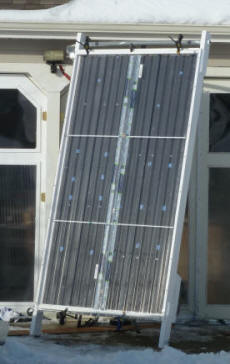
These are first cut results from the first test of the
backpass reference collector.
In the backpass collector, all of the air flows behind the metal
absorber plate. A set of baffles behind the absorber attempt to
distribute the flow evenly over the full surface of the absorber.
NOTE: This was the first collector built, and none of the tests below
show comparisons to the other collector designs -- see the links on the
other collectors for the comparative performance.
Back to the Solar Air Heating Collector test program
home...
|
|
Setup
The pictures show the setup.
The collector was positioned outside
my shop south doors with the inlet and outlet hoses going through holes in the
door.
The fan was the Elicent 125B with a
damper to reduce air flow.
The connecting ducts were the 6 inch
insulated HVAC flexible plastic ducts. 6 inch ducts were used to minimize
pressure losses in the ducts.
There are straight sections of 6 inch
metal duct with flush ports to measure static pressure.
The big bag technique was used to
measure airflow along with a Kestrel wind meter at the outlet duct.
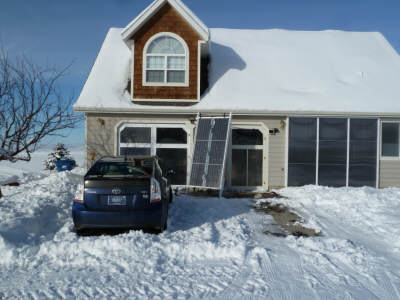
Collector set up outside shop |
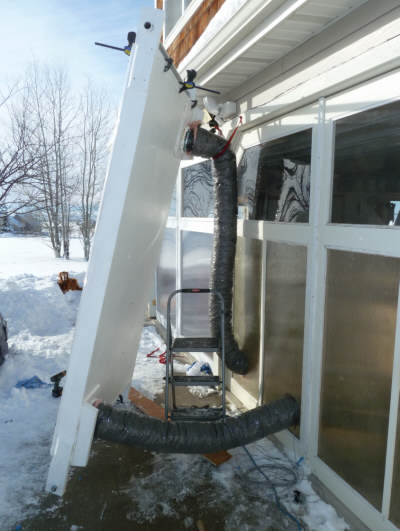
Back of collector showing 6 inch insulated flex ducts. |
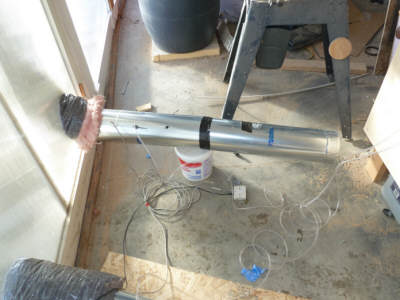
Collector inlet duct.
Pressure port is the one with clear tube.
Temperature is measured just to left of pressure
port where wire goes into duct. |
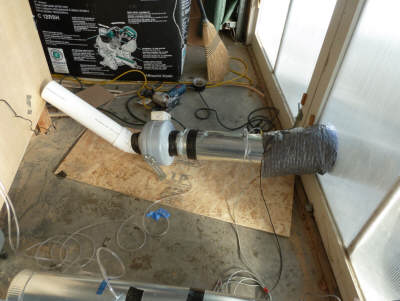
Collector outlet duct with blower.
The 4 inch duct at outlet of blower was used to measure
flow rate with the big bag, and was on for the full test.
A pivoting damper is used just in front of the blower
to reduce flow.
Pressure port is toward right end of metal duct. |
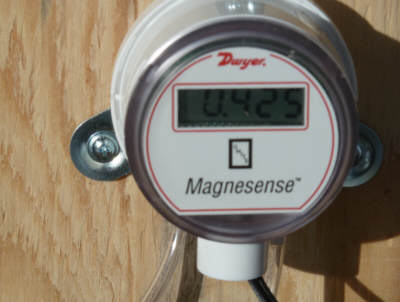
Manometer used to read pressure drop across
the collector. |
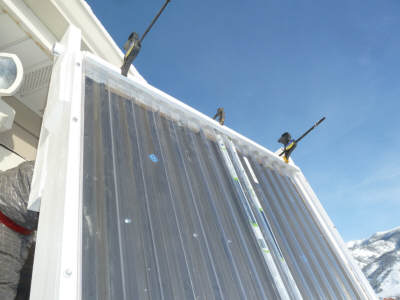
Quickclamps used to hold the gazing tightly sealed
to the wiggle strips via a compressor board.
This seems to work well, and is quick to remove. |
Absorber Temperatures -- Looking for
Hot Spots
I measured temperatures of the
absorber with the glazing off to get an idea of how well the air flow is
distributed across the whole absorber sheet. Parts of the absorber
that are getting poor airflow should show up as hotter temperautres.
The temperatures were measured where
the blue tape is on this picture
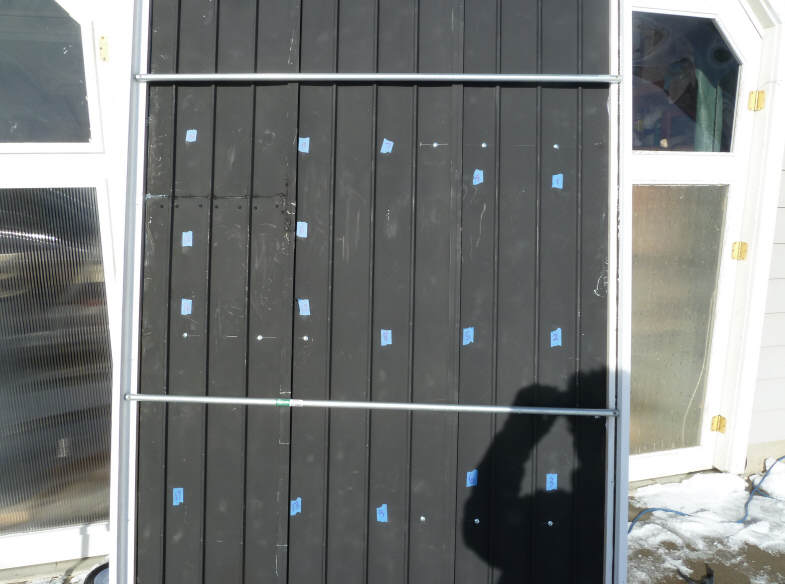
The Baffles show up on the picture as
three bright screw heads -- three are visible on this picture - top right,
middle left, and bottom right.
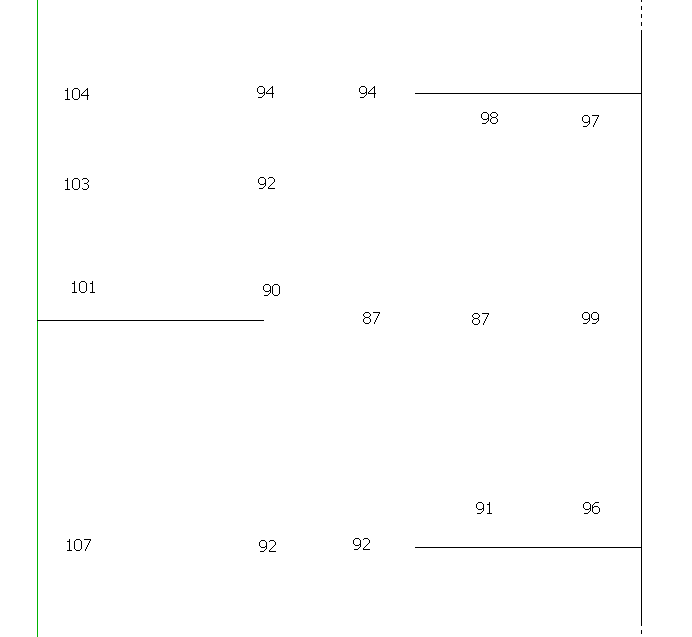
These are the absorber plate surface
temperature measurements in degrees F. The locations correspond to the
blue tape spots on the pictures above. The solid horizontal lines are the
baffles.
Overall, this looks pretty good to
me.
The highest temp is 20F hotter than
the lowest temp. Average is 95.5F.
If you take about 90F to represent
areas that are getting good flow, then most areas are within about 5F of this,
with the outer left edge going as much as 15F above this.
Not sure why the left edge is showing
higher temps than the right edge?
The corners formed by the collector
vertical edges and the baffle run somewhat hotter on average as one would
expect.
There may be some argument for making
the baffles longer?
The air seems to be flow more
strongly down the center of the collector with (maybe) not enough being directed
to the outer edges?
I wish I had measure the temperature
of the absorber with no air flow so that there would be something to compare
this to to. May try that in the next test.
Questions:
While I think this arrangement is
performing pretty well, I would be up for making the baffles a bit longer, and
increasing the depth of the flow channel a bit?
The baffles are 18 inches long now --
perhaps add 6 inches?
This will increase the pressure drop
somewhat (not sure how much), but we are already somewhat high.
Increasing the flow channel height to
would get the pressure drop down some, but would also bring velocity and
turbulence down?
Let me know what you think?
another approach would be to just go
with this as the reference collector, and then build a 2nd backflow collector to
compare it to with different baffle and flow channel heights?
Other Results
I attempted to take temperature data,
but the logger had a problem ad did not get it.
One manual point measured roughly was
Tin 42F, Tout 64F. This was at about 80 cfm.
The sun was pretty good, but there
were high thin clouds most of the time.
Tambient was 25F.
Little to no wind.
The static pressure drop through the
collector was 0.415 inches of water with 70 cfm flow.
Gary December 5, 2010

